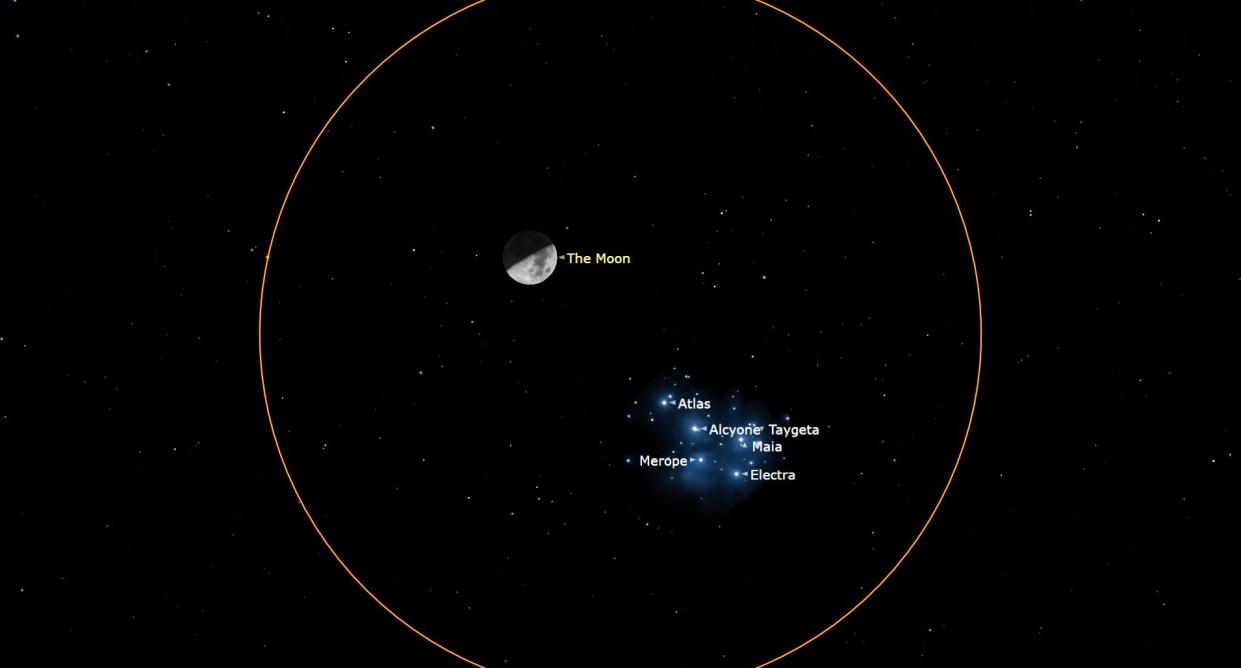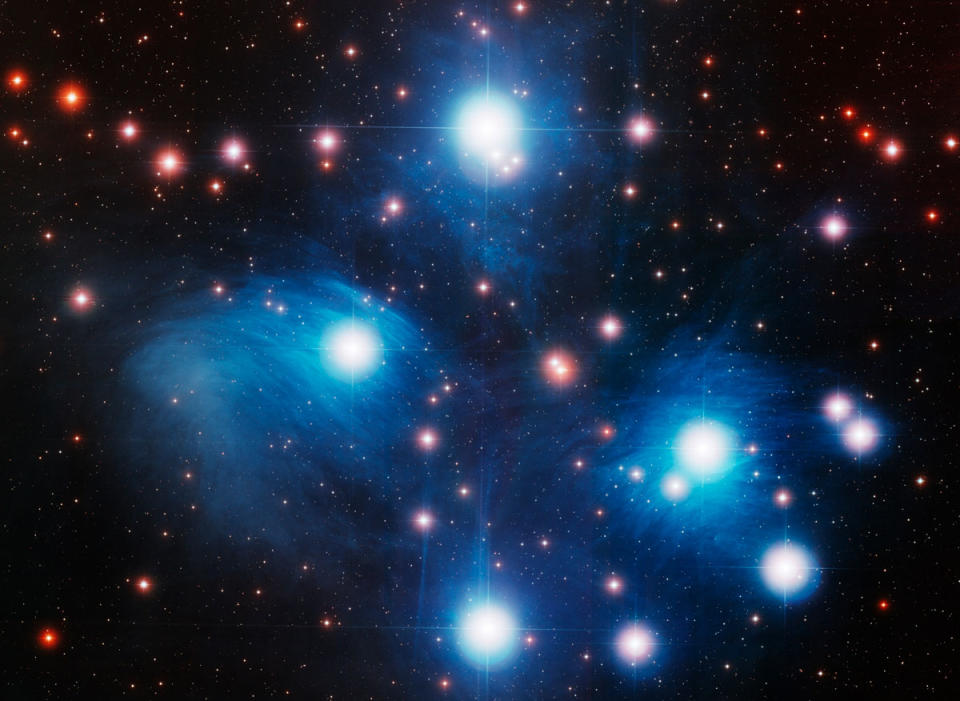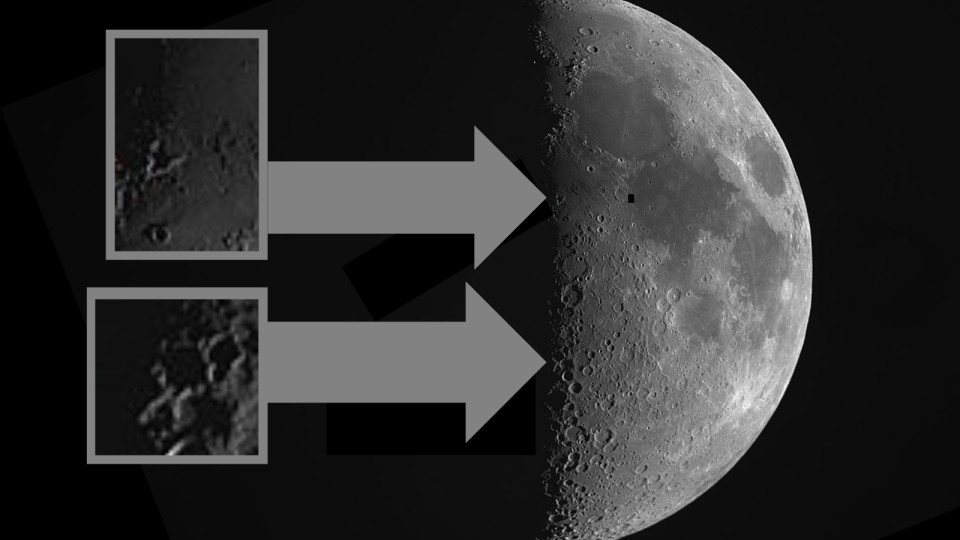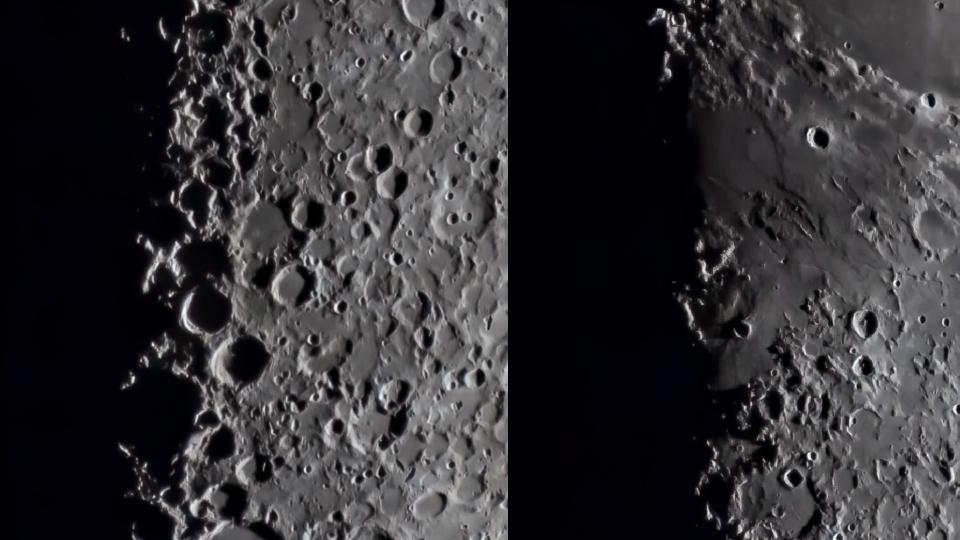See the moon meet up with the Seven Sisters of the Pleiades tonight

The moon will meet up with the Seven Sisters, the Pleiades star cluster, on Friday (Feb. 16), also displaying a rare optical feature on its surface that can be seen with telescopes.
The half-illuminated 7-day-old moon will be in its first quarter phase as it encounters the Pleiades star cluster, also known as Messier 45 (M45). During the meet-up, two lunar landscape features known as the Lunar X and Lunar V will be visible, named so because they resemble those letters of the alphabet. They both appear on the lunar surface near the dividing line between the light and dark sides of the moon's visible disk, known as the terminator line.
From New York City, the moon and the Pleiades will become visible together at around 6:12 p.m. EST (2312 GMT) as the two are high over the horizon to the south, according to In the Sky. The moon and the Pleiades will disappear from view when they set at around 1:31 a.m. EST (0631 GMT) on Saturday morning (Feb. 17).
Related: Night sky, February 2024: What you can see tonight [maps]
The two objects, which will both be located in the constellation Taurus at the time of the close approach, will be too widely separated to be seen together in the narrow field of view of a telescope but should be visible next to each other with binoculars.

TOP TELESCOPE PICK:

Want to see craters on the moon up close, or the moons of Jupiter? We recommend the Celestron Astro Fi 102 as the top pick in our best beginner's telescope guide.
The Pleiades is located around 44 light-years from Earth and is defined as an open cluster, which is an arrangement of stars that are believed to have formed at roughly the same time and from the same collapsing cloud of gas and dust.
Of the roughly 1,000 stars in the Pleiades, around six or seven are bright enough over Earth to be seen with the naked eye. Its visibility over our planet has granted the Pleiades great importance throughout history and a player in many cultures and mythologies even before the invention of the telescope.
The Seven Sisters of the star cluster's name are figures from Greek Mythology, and refer to the daughters of Atlas and Pleione: Alcyone, Maia, Electra, Merope, Taygete, Celaeno, and Sterope. The mythological seven sisters were transformed into doves and then stars by Zeus, the overlord of the Greek Pantheon of gods. Each of the seven brightest stars of the open star cluster is named after one of the seven sisters, with two other bright stars in the Pleiades named after their parents — Atlas and Pleione.
The star cluster M45 is huge, stretching for around 17.5 light-years, despite looking fairly diminutive in the night sky over Earth. It hosts a population of stars that has a total mass equivalent to around 800 suns but its gravitational influence extends even further; its "tidal radius" can be felt up to around 43 light-years from the open cluster.

The Lunar X and Lunar V features of the moon that will be visible by telescope on Friday are the result of the way light from the sun falls on the lunar surface.
Lunar X is created by light hitting the rims and ridges of the craters known as La Caille, Blanchini and Purbach, while Lunar V is the result of sunlight falling on the crater Ukert and other smaller craters, according to EarthSky.

If you're hoping to catch a look at the Pleiades during this close encounter with the first quarter moon, or to see Lunar X and Lunar V, our guides to the best telescopes and best binoculars are a great place to start.
If you're looking to snap photos of the night sky in general, check out our guide on how to photograph the moon, as well as our best cameras for astrophotography and best lenses for astrophotography.
Editor's Note: If you snap an image of the moon beside the Pleiades and would like to share it with Space.com’s readers, send your photo(s), comments, and your name and location to spacephotos@space.com.

